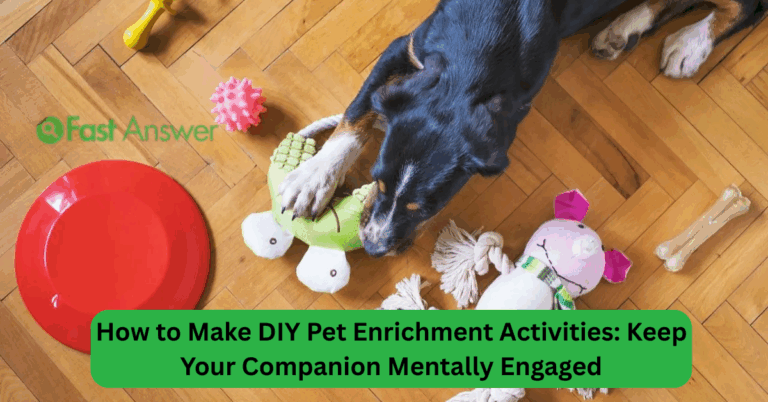Indoor vs Outdoor Pets Pros and Cons: Making the Right Choice for Your Pet’s Lifestyle
Choosing whether your pet should live primarily indoors or outdoors is a big decision and one that impacts their health, happiness, and your daily routine. The indoor vs outdoor pets debate often comes down to space, safety, and the species or breed you’re caring for. While some animals thrive with freedom and fresh air, others need the protection, structure, and socialization that an indoor environment provides. This article explores the pros and cons of both lifestyles to help pet parents make informed, balanced choices tailored to their living situation and pet’s personality.
Indoor Pets: Security, Supervision, and Closer Bonds
Keeping pets indoors offers a high level of control over their environment, which translates into better protection against illness, accidents, or predators. Indoor pets especially cats, small dog breeds, and exotic animals typically live longer due to reduced exposure to outdoor threats like traffic, parasites, and harsh weather.
These pets often form stronger bonds with their humans due to frequent interaction. You’ll also notice changes in their behavior or health more quickly. However, the tradeoff is that they require more enrichment and exercise indoors to prevent boredom, anxiety, or obesity. Indoor pets need dedicated playtime, stimulation, and a clean, safe living space that mimics aspects of the outside world.
Outdoor Pets: Natural Enrichment and Independence
For certain animals—especially livestock, large breeds, or working dogs outdoor life can provide the freedom and stimulation they crave. The outdoors offers natural scents, sights, and room to roam that support their mental and physical health. With access to spacious, secure areas, outdoor pets can satisfy their instincts and enjoy a more independent lifestyle.
But the freedom of the outdoors also comes with risks. Outdoor pets are more exposed to injury, theft, disease, and unpredictable weather. Without supervision, they may wander, get into fights with other animals, or ingest harmful substances. Outdoor pets also miss out on regular bonding unless their owner is actively involved in outdoor play or care.
Balancing the Best of Both Worlds: Indoor/Outdoor Hybrid Living
Some pet parents find success in offering both environments. Cats, for instance, may thrive with supervised outdoor time or access to a secure “catio.” Dogs often benefit from regular walks, fenced yards, or structured outdoor play, but sleep safely indoors at night. Rabbits and guinea pigs might enjoy occasional outdoor grazing in secure pens, but remain primarily indoor companions.
Hybrid living can offer the stimulation of outdoor environments with the safety and structure of indoor life. The key is supervision, secure enclosures, and consistency. Pets that split time between settings must be closely monitored to ensure they adapt well and stay safe in both worlds.
Consider Your Environment, Pet Type, and Lifestyle
The decision should reflect your pet’s breed, age, health status, and personality as well as your own schedule and environment. Urban living, apartment life, or high-traffic neighborhoods may make indoor living safer. Rural homes with secure land might support well-managed outdoor pets. Some animals, like reptiles or birds, are strictly indoor by necessity, while others, like certain working dogs or goats, may thrive outdoors with proper care.
Think long-term what will life look like for your pet as they age? Will you always be available to supervise outdoor time? Can you provide a safe, stimulating indoor environment if needed? Your answers should guide your decision.
Veterinary and Safety Implications to Consider
Veterinarians often recommend indoor living for companion animals due to the significant reduction in health risks. Fleas, ticks, respiratory infections, and injuries are far more common among outdoor pets. If you do allow outdoor access, it’s essential to keep vaccinations, parasite control, and ID tags up to date.
Microchipping is especially important for pets with outdoor access. So is spaying or neutering to prevent territorial roaming or unwanted litters. Even for primarily indoor pets, it’s wise to prepare for emergencies in case they ever slip outside or get lost.
FAQ
1. Do indoor pets live longer than outdoor pets?
Yes, indoor pets typically have longer lifespans due to fewer accidents, reduced disease exposure, and safer environments.
2. Is it cruel to keep a pet indoors all the time?
Not if their needs are met. With proper enrichment, exercise, and attention, indoor pets can thrive emotionally and physically.
3. Can a cat be both an indoor and outdoor pet?
Yes, with safe solutions like supervised outings or catios. Hybrid setups offer mental stimulation with reduced risk.
4. What pets should never be kept outdoors?
Small mammals, reptiles, and birds should always be housed indoors, as they’re highly sensitive to temperature and predators.
5. How can I make indoor life more stimulating for my pet?
Use puzzle toys, climbing structures, scent games, and regular playtime to keep them engaged and mentally satisfied.




